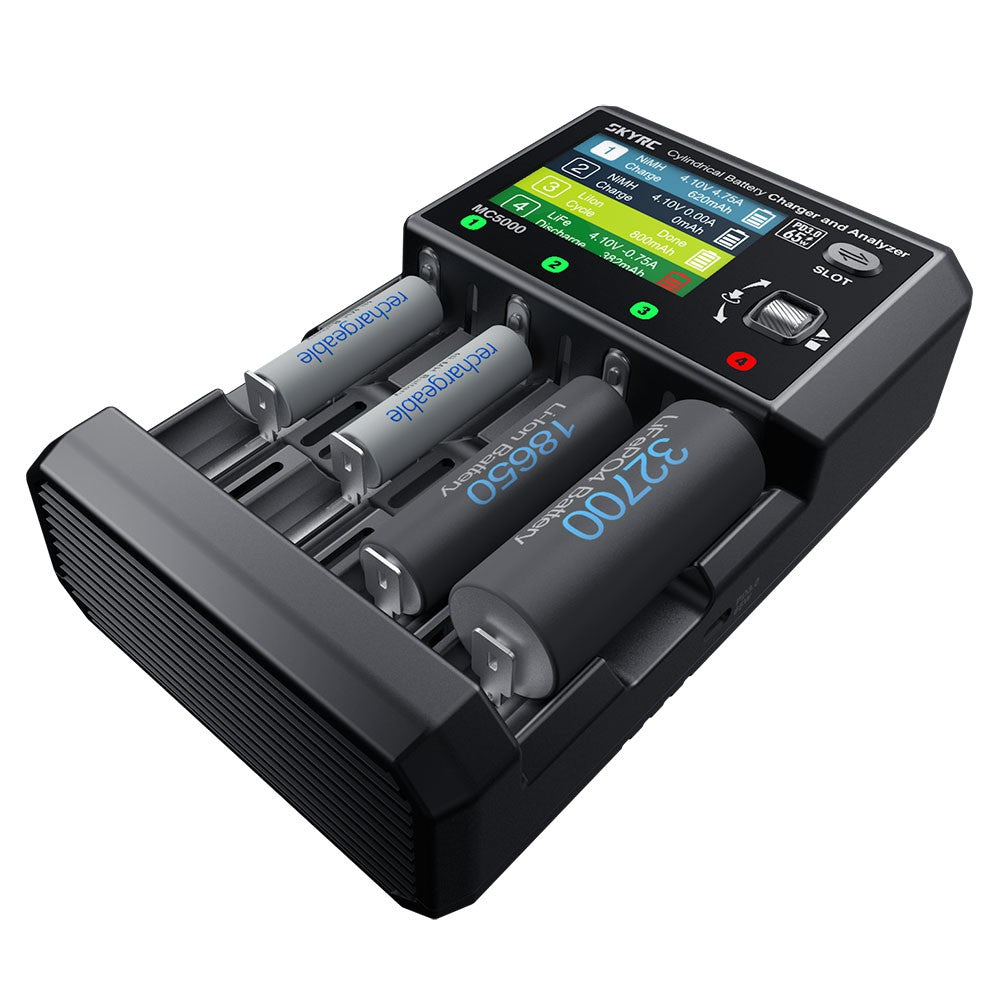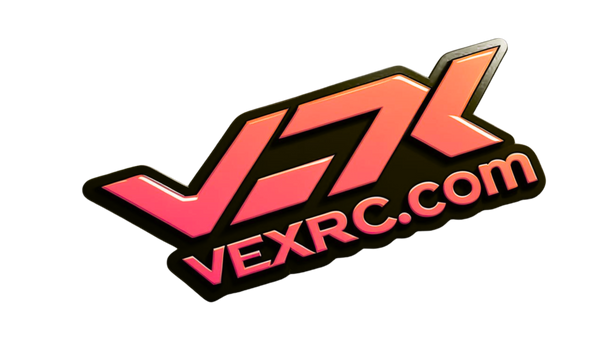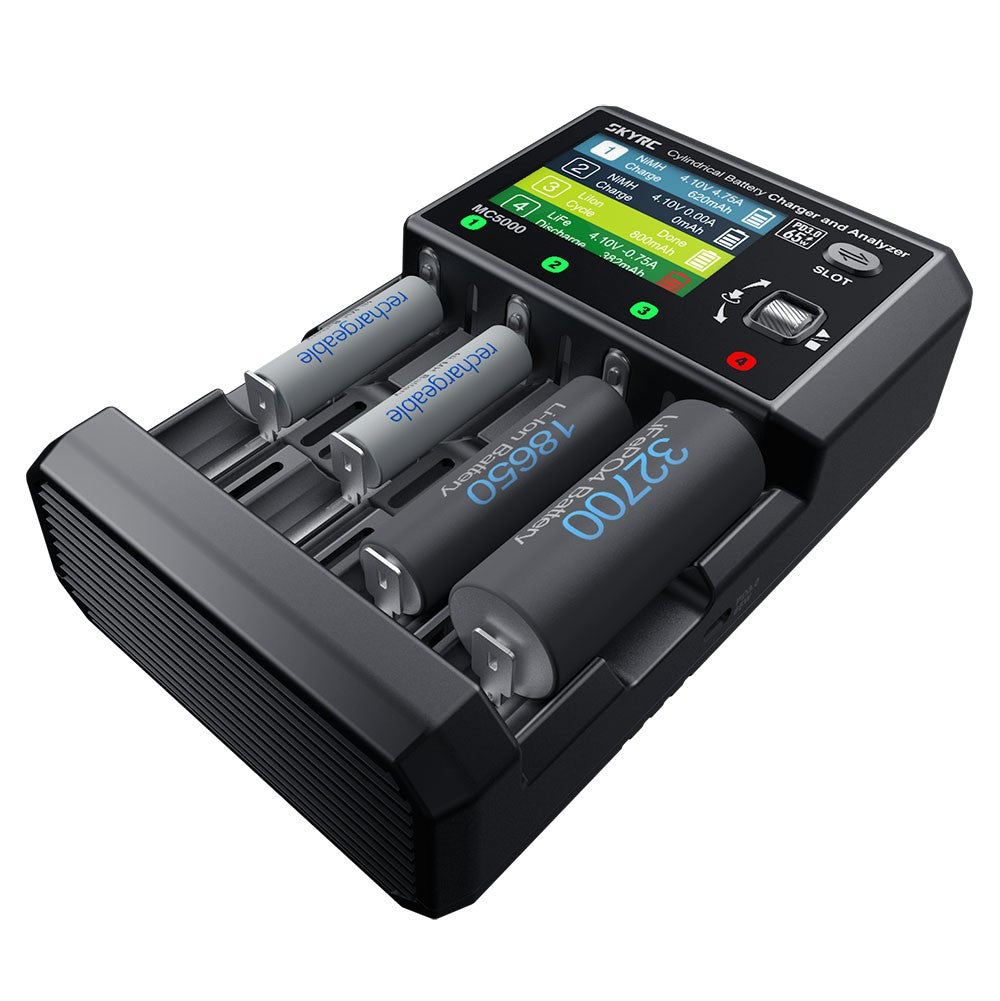SkyRC
MC5000 Cylindrical Battery Charger and Analyzer
MC5000 Cylindrical Battery Charger and Analyzer
Impossible de charger la disponibilité du service de retrait
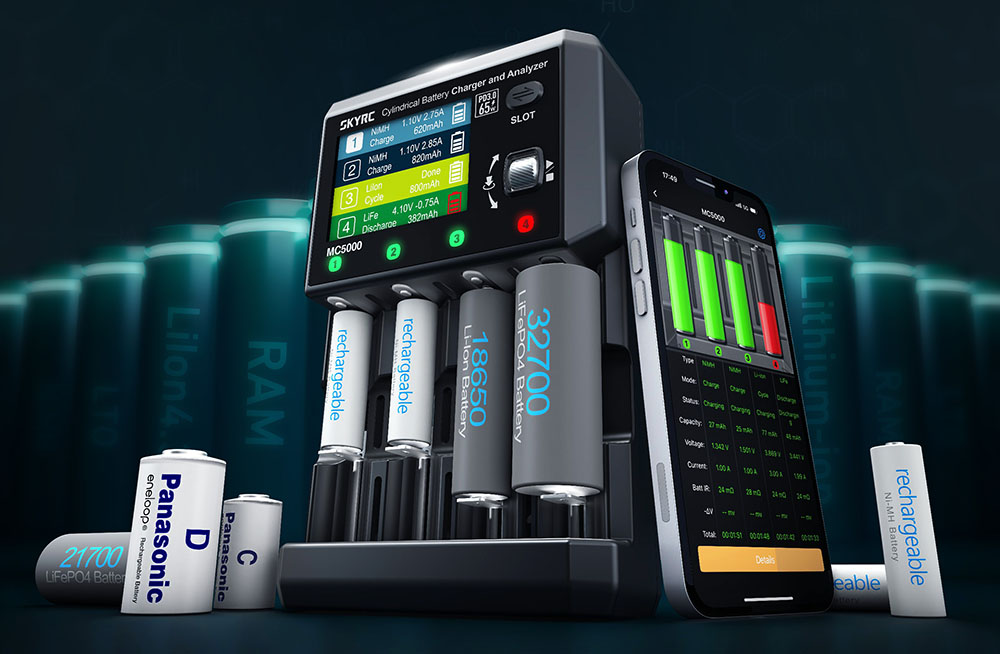
MC5000 is a versatile smart charger specifically designed for cylindrical batteries, integrating charging, discharging, and analysis functions.
With four independent charging slots, it can simultaneously charge four batteries with customized settings.
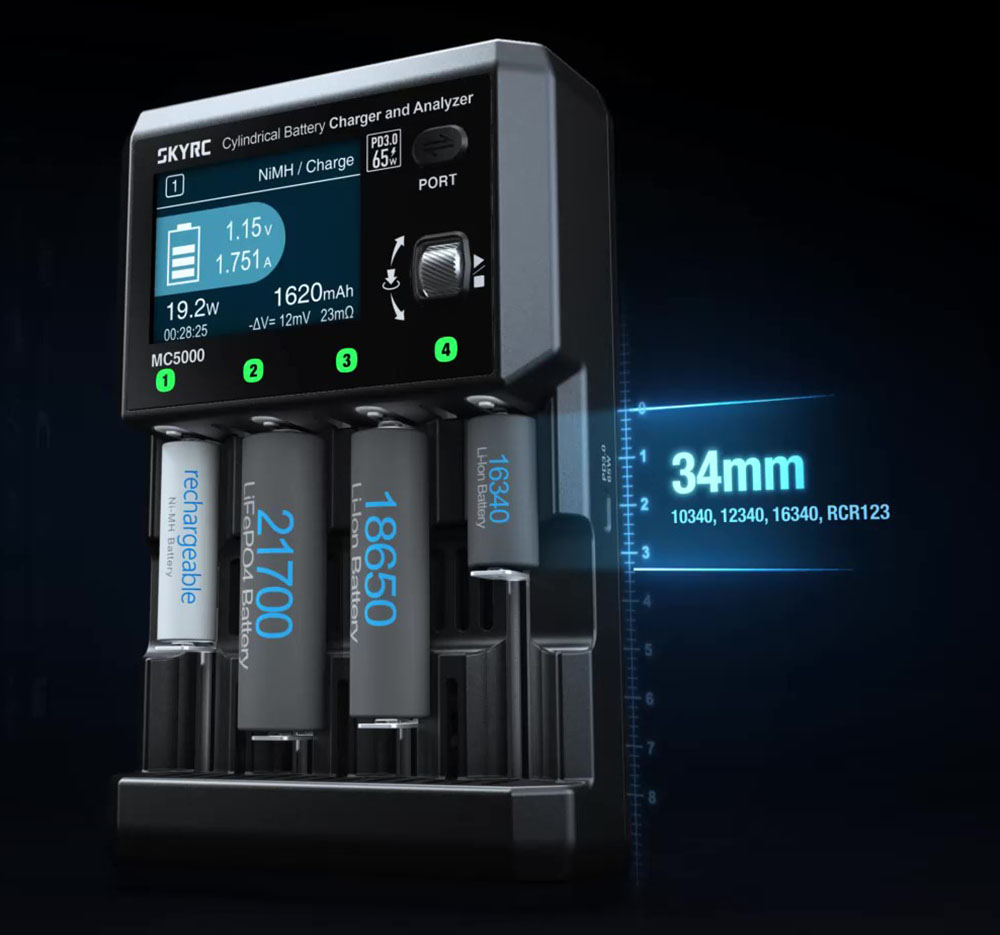
It supports PD output with a maximum power of 65W. Users can adjust charging and discharging currents up to 5.00A and 2.00A respectively.
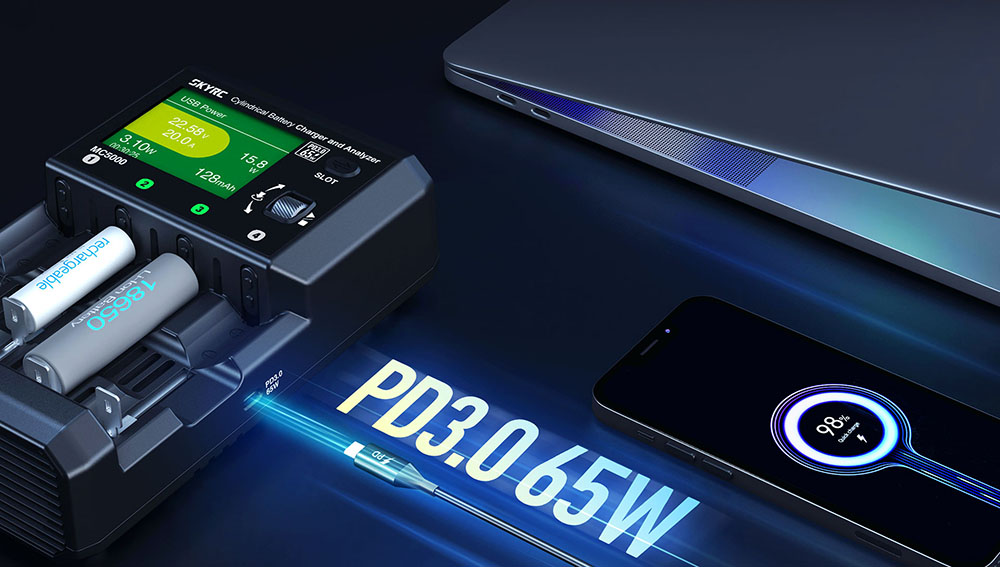
The large color screen shows real-time parameters like current, voltage, capacity, curves, and internal resistance, offering a clear view of the battery’s status and key metrics.·
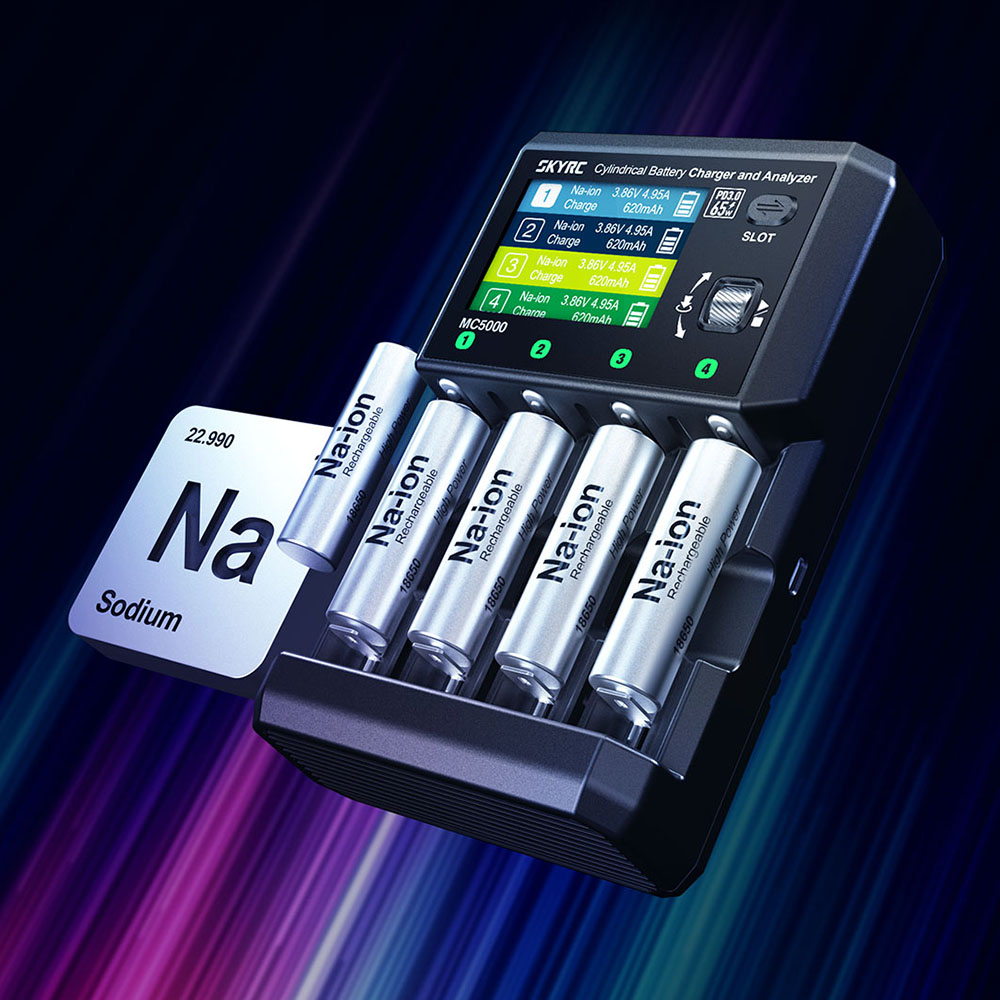
Furthermore, with built-in Bluetooth, MC5000 allows for seamless battery management through a mobile app, making data analysis and firmware upgrades effortless!
The SkyRC MC5000 supports the following battery types:
NiMH
Nickel-Metal Hydride battery, 1.2V nominal voltage. The most common type of consumer class AA size rechargeable batteries for caméras, equipment, flashes, flashlights, tools, toys, bedroom, etc.
NiCd
Nickel-Cadmium battery, 1.2V nominal voltage. Has still its uses in today’s world of battery packs but single cells hâve become a rarity as they are being phased out due to their environmental toxicity. Stay away from children.
NiZn
Nickel-Zinc battery, 1.65V nominal voltage. Charges to 1.9V, cannot take trickle charge, should not be discharged lower than 1 10V. Low cost, high output cell, suitable for fast charging, can be cycled 200-300 times. PowerGenix is a notable maker of NiZn batteries.
RAM
Rechargeable or Reusable Alkaline battery, 1.5V nominal voltage. If not discharged deeper than 50%, it could be cycled up to 25-50 times. Restricted depth of discharge, limited cycle count, drastically lowered capacity on repeat charge. RAM batteries can leak as nastily as Alkaline batteries.
Eneloop
Not really a battery type but a brand name. Market leading professional grade NiMHbased low self-discharge industrial standard superior battery product originally made in Japan by Sanyo or FDK, now by Panasonic and also in China. The charging algorithm is the same as for NiMH but some options hâve been adapted for more convenient presets. Can be cycled 2100 times according to daims in ads; visit eneloop.com or also eneloop101 corn for further info.
Li-ion
standard Lithium-Ion battery, 3.6V 3.7V nominal voltage. Most common are Li-cobalt and Limanganese based chemistries, both can be charged safely with this setting. Li-ion charging uses the recommended CC-CV charging algorithm with user-definable charge cut-off current. Target voltage is 4.20V; setting it higher is dangerous, and protected 18650's would not let the charger charge higher than that.
Li-ion HV
Lithium-Ion High-Voltage battery, 3.8V nominal voltage. Very similar to standard Lithium-Ion but these cells can be charged safely up to 4.35V. Samsung is the only known highquality manufacturer of such non-standard Li-lon cells apart from LG. Ail in ail, you must NOT use this battery type setting with standard Li-lon batteries!
LiFe
Lithium Iron Phosphate battery, LiFeP04, 3.2V nominal voltage. A safer Li-ion chemistry, charges to 3.65V, must not be discharged lower than 2.0V. Not to be confused with Lithium Polymer battery, LiPo.
LTO
Lithium-Titanate battery, 2.4V nominal voltage. One of the safest Li-ion chemistries around, because of low capacity typically in form of battery packs for UPS, electric powertrains, solar-powered Street lighting, or similar professional applications, offers very long life span of thousands of cycles at high charge/discharge rates and also superior performance at cold températures. Single cells, cylindrical or not, remain a rarity on the market.
Na-ion
Sodium-ion battery, -3.3V nominal voltage. Similar to Li-ion but uses sodium instead of lithium, making it more eco-friendly and abundant. Slightly lower energy density, but better performance in cold climates. Charging profile resembles Li-ion; follow the battery manufacturer^ specs for max voltage and current to avoid overcharging.
Share
